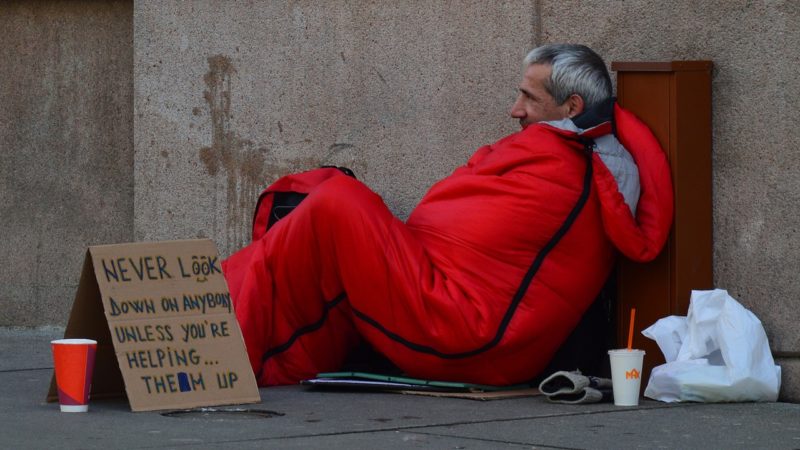"What’s troubling is that the likely future Prime Minister will probably care even less about social housing than his two predecessors."

In the last decade, we’ve seen Prime Ministers come and go through No. 10 and make grand promises when it comes to housing, but as affordable homes continue to dwindle and homelessness continues to rise, the Conservative party looks set to create a legacy of a country without a home.
In 2012, the desire for homeownership grew across the country and David Cameron ‘re-invigorated’ the Right to Buy policy and promised to create a one-to-one trade-off. In other words, the council homes being sold would be replaced.
While massive spending took place on Help to Buy to boost home ownership, social house-building dwindled to virtually nothing and just one-third of social houses were actually replaced.
Then came Theresa May’s government, who claims to have done better than her predecessor, in spite of the stain of the Grenfell disaster that claimed 72 lives.
Not helping the crisis were housing associations, which have been co-opted as vehicles to extend home ownership rather than social renting, epitomising the Tory housing policy approach.
As research by the Human City Institute has shown, affordable house-building of all kinds has fallen by two fifths over the last decade blighting the lives of low-income households across the country as homelessness has soared and housing needs have worsened. Social rent house-building fell by much more over the same period – from just over 37,000 annually to under 1,000 – a 97% decline.
These housing development trends unsurprisingly fed into reduced lettings for new homes by social landlords, which fell off a cliff between 2012/13 and 2013/14, from more than 73,000 to just under 26,000, and declined thereafter.
The upshot of this is that there have been almost 250,000 fewer new lettings, reducing rehousing opportunities for homeless people and those living in overcrowded or poor conditions, than would have been the case if funding for the social housing sector had not been cut by 60% in the Comprehensive Spending Review of 2010.
This is at a time when social housing waiting lists remain at about 1.2 million households in England, despite false reductions brought about by the Localism Act 2011.
The period since 2010 has also witnessed massive increases in homelessness of all types – rough sleeping, hidden homeless (such as sofa surfing, sleeping in cars), statutory homelessness, and use of temporary accommodation (e.g. B&B, hostels etc.) by local authorities. There are now an estimated 320,000 homeless households nationally using these criteria.
While she has admitted that social housing had been “a victim of the single-minded drive for homeownership”, given this backdrop, Theresa May, the only Prime Minister to be seeking a legacy after resigning the premiership, should be suitably contrite about the housing record of the Conservatives over the last decade.
What’s troubling is that the likely future Prime Minister will probably care even less about social housing than his two predecessors.
Kevin Gulliver – @kevingulliver – is a director of Birmingham-based research charity the Human City Institute, former Chair of the Centre for Community Research, and part of the SHOUT save social housing campaign, but writes in a personal capacity. His interests are social and economic policy, especially relating to housing, health, wellbeing, communities, deprivation and disadvantage, and inequalities.
Left Foot Forward doesn't have the backing of big business or billionaires. We rely on the kind and generous support of ordinary people like you.
You can support hard-hitting journalism that holds the right to account, provides a forum for debate among progressives, and covers the stories the rest of the media ignore. Donate today.




8 Responses to “Ten years of austerity will leave behind a legacy of homelessness”
Patrick Newman
You will need to search Google for the full story in Inside Housing.
Blissex
The article is based on the usual absurd premise that the government can build and give away for a low price to a few lucky people some houses in areas with many jobs like the Home Counties and London.
But the problem is not that there are too few houses in the already congested Home Counties and London, it is that there are few jobs in the sparsely populated rest of the country, but still many governments focus business and job attracting investment to the Home Counties and London, and thus push people from the rest of the UK to move there to pay big rents and prices to the tory-voting incumbents.
There is instead plenty of cheap housing in most of the north and other left behind areas, and if there was business and job attracting attracting investment in those areas their residents could stay there instead of going to London and the Home Counties to be shaken down by tory-voting property owners there, or a small minority get a gift of cheap rent in social housing.
Dave Roberts
Some sensible posts and the usual nonsense from Mr Newman. He reminds me of a character in Mad Magazine that I used to read when I was young many years ago, Alfred E Neuman. He was a totally gormless prat who got the wrong end of everything.
Houses are built on land or from existing buildings altered for another purpose and both as a resource are finite, end of story. I am sick and tired of telling the left that there are number of things that must be taken into account.
Firstly the homeless as depicted in this article are incapable of taking care of themselves for various reasons and need some form of supervised or sheltered accommodation. In my direct experience much of the homelessness that I encounter in my job as a chartered surveyor is of people recently arrived from other countries, substance abusers and people with long term mental problems. The day job calls so I’ll return to this fray later.